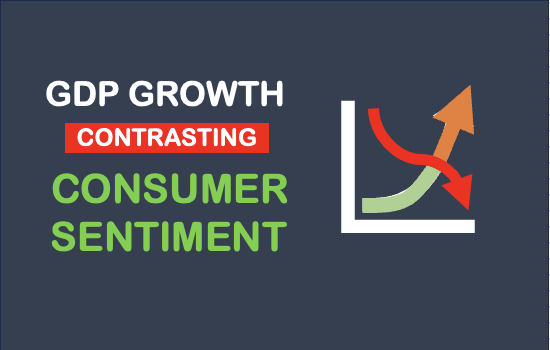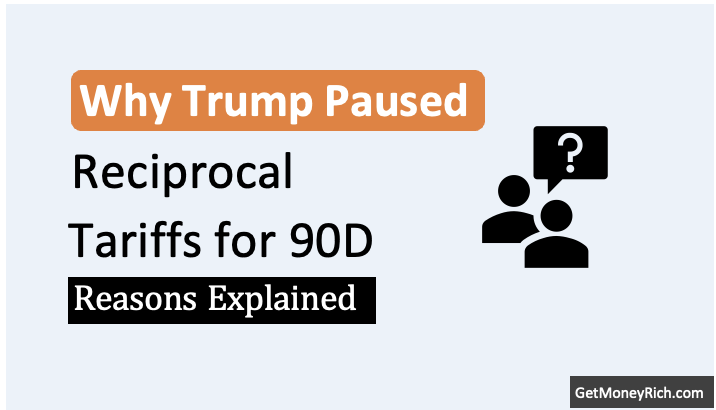Summary Points:
- The U.S. dominates global trade because of its massive consumer market and high household expenditures ($18.8 trillion in 2023).
- Countries hesitate to retaliate against U.S. trade tariffs because losing access to American consumers can harm their economies.
- The U.S. household consumption accounts for 67.9% of its GDP, far higher than countries like Germany (49.93%) and France (53.36%).
- If a smaller economy like Italy imposed tariffs, the world would largely ignore it, unlike U.S. tariffs, which impact global markets.
- India, with household expenditures of $2.15 trillion (60.34% of GDP), has the potential to become a consumption-driven economy.
- To match the U.S., India needs higher disposable incomes, financial security, and better credit access to boost domestic consumption.
Introduction
If you’ve ever wondered why the U.S. seems to call the shots in global trade, it all boils down to one major factor, their insane appetite for consumption. The American economy thrives on buying and spending, and the entire world wants a piece of that massive consumer market.
Now, here’s an interesting question. Why did countries put up with Donald Trump’s tariff threats instead of retaliating aggressively? Why did major economies like China, Germany, and even India respond so cautiously when he imposed or threatened trade barriers?
The answer is simple, nobody wants to lose access to the American consumer market. How big is the US consumer market? Check the below table:
| Country | GDP (USD Trillions) | Household Consumption (% of GDP) | Household Consumption (USD Trillions) |
|---|---|---|---|
| United States | $26.85 | 67.9% | $18.22 |
| Germany | $4.53 | 49.93% | $2.26 |
| United Kingdom | $3.38 | 61.08% | $2.07 |
| France | $3.05 | 53.36% | $1.63 |
| Italy | $2.30 | 58.36% | $1.34 |
| India | $3.18 | 60.34% | $1.92 |
| China | $17.73 | 39.13% | $6.94 |
The United States dominates global consumption, with household expenditures reaching approximately $18.22 trillion in 2023, over eight times that of Germany ($2.26 trillion) and nearly nine times that of the UK ($2.07 trillion). As a percentage of GDP, U.S. household consumption stood at 67.9%, far exceeding Germany (49.93%), France (53.36%), and Italy (58.36%). This immense spending power makes the U.S. the world’s largest and most influential consumer market, giving it unparalleled leverage in global trade. While other developed nations have strong consumer bases, the sheer scale of U.S. consumption makes it the ultimate shopping hub, a market that no major exporter can afford to ignore.
So, it is clear that the U.S. buys so much that if a country is shut out of that market, its industries can take a serious hit. No government wants to risk job losses, economic slowdowns, or financial instability just to fight a trade war with the U.S.
If a smaller economy, say Italy, had tried this kind of bullying, countries would have simply ignored it or found alternative buyers. But when the U.S. does it, everyone treads carefully. That’s the power of being the world’s biggest customer.
[Note: Just for reference, in 2023, India’s household final consumption expenditure was approximately $2.15 trillion USD, accounting for about 60.34% of the nation’s GDP.]
The U.S.: The World’s Biggest Customer
Think about it this way, if you’re running a business, who would you rather sell to?
A country where people have a lot of money and love to spend, or a place where people are still struggling to make ends meet? That’s why China, Germany, Japan, India, pretty much every major exporting nation, tries so hard to sell their products in the U.S.
Unlike many other countries, the U.S. doesn’t just produce and export; it imports heavily, running trade deficits year after year. But instead of being a weakness, this has turned into a source of power. Because so many economies depend on selling to the U.S., America gets to dictate trade terms. Read more about Does India’s Trade Deficit Matters when US can carry so much deficit?
That’s why when Donald Trump threatened reciprocal tariffs on countries like China, India, and Germany, most nations responded very cautiously. Nobody wants to lose access to such a big-spending market.
Now, imagine if a smaller economy, let’s say Italy, tried pulling the same stunt. Would the world react the same way?
Probably not. Italy is a developed country, but its consumption power is nothing compared to the U.S. If they impose tariffs, most exporting nations would just shrug and find another buyer. But when the U.S. does it, exporters take notice because losing American consumers means taking a huge financial hit.
The Role of Per Capita Income in Driving Consumption
One of the main reasons Americans consume so much is that they earn a lot. The per capita income in the U.S. is among the highest in the world. What does it mean? A large section of the population has disposable income which they can spend on everything, from necessary to discretionary items (essentials vs luxuries).
To understand the effect of how high income triggers consumption, let’s apply this logic to India.
Imagine if 25% of India’s population had Rs.2 crore sitting in fixed deposits. With an interest rate of 6% per annum, that means they’d be earning around Rs.1 lakh per month in passive income, without doing anything. What do you think would happen?
They’d spend more for sure. They’d buy better homes, upgrade their cars, eat out more often, and travel more frequently. Slowly, India would transition into a consumption-driven economy, just like the U.S.
Of course, we’re not there yet (in fact far from it). While India has a rising middle class, income inequality remains a huge challenge. A significant percentage of our population still struggles with basic needs, which means they aren’t spending freely like Americans do.
For India to truly become a consumption powerhouse, we need higher disposable incomes, better financial security, and a more developed credit system.
A lot of people (not everyone for sure) in the US has this ability and that is why US has some much consumption capacity. And this is what gives US the superpower to bully other countries.
Will India Ever Be Like the U.S. in Terms of Consumption?
It’s an interesting question. The answer? Possibly, but not anytime soon.
For India to reach U.S.-level consumption, several things need to change.
- First, more people need to move into the high-income bracket. The U.S. has a well-established social security system, healthcare benefits, and pension plans, which make people feel financially secure enough to spend rather than save. In India, we still have a strong saving mentality because we lack such safety nets.
- Secondly, our financial markets need to evolve. In the U.S., credit is easily available, allowing people to buy now and pay later. In India, access to credit is growing, but not at the same level. As more Indians get access to affordable loans and financing options, consumption will naturally rise.
That being said, India has one big advantage, its massive population.
If even a fraction of Indians start earning at U.S. levels, our domestic consumption could surpass that of the U.S. simply due to sheer numbers.
We are already seeing this in industries like smartphones, e-commerce, and automobiles. As incomes rise, so will consumption.
Conclusion
The U.S. dominates global trade not just because of its wealth, but because of how much it spends.
Countries across the world are eager to sell their goods there, giving America massive bargaining power.
India, on the other hand, is still evolving. We have the potential to become a consumption-driven economy, but it will take time.
For now, the world respects the U.S. as a market because it buys so much. If India wants that kind of influence, we need to ensure that more people have the financial freedom to spend, not just save. Until then, we will remain an export-heavy economy that depends on selling to countries like the U.S.
So, will India ever be the next big consumption powerhouse? What do you think? Let me know in the comments section below.
Have a happy investing.





